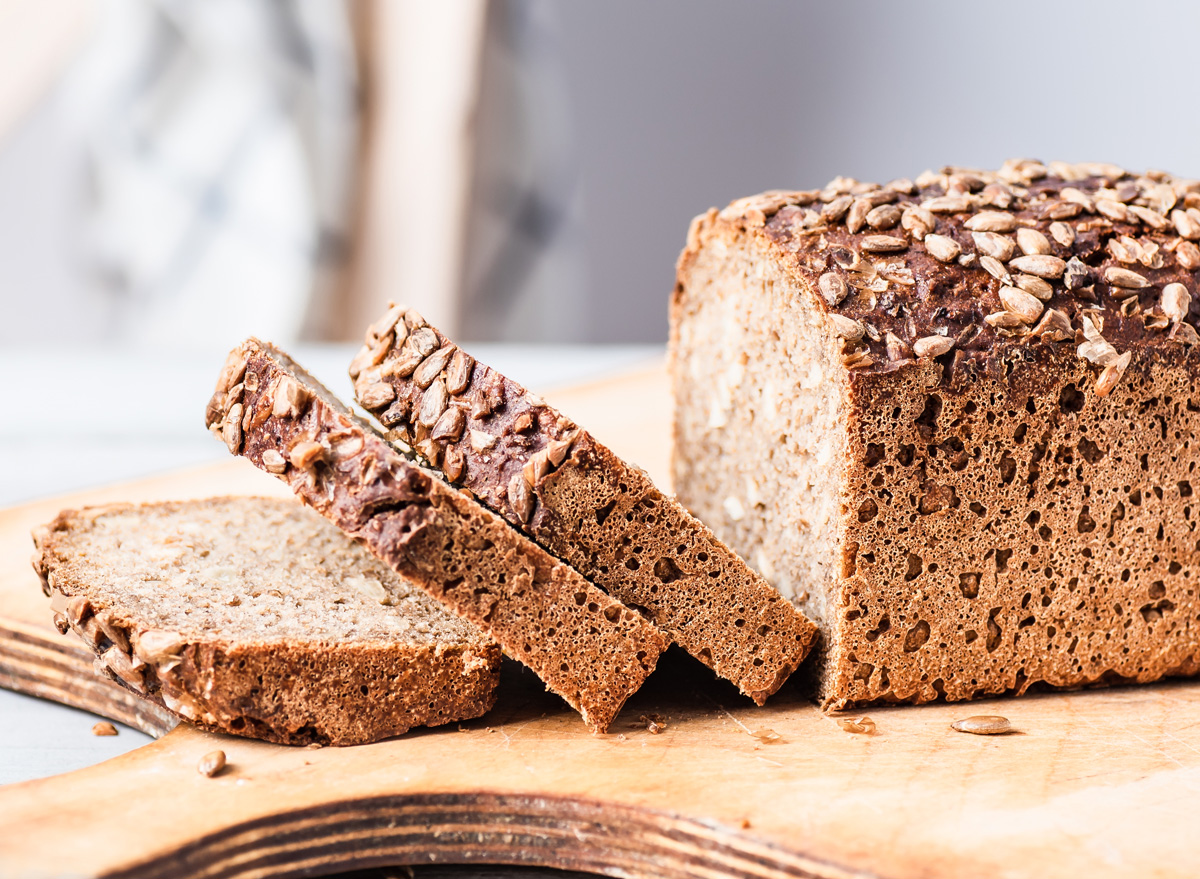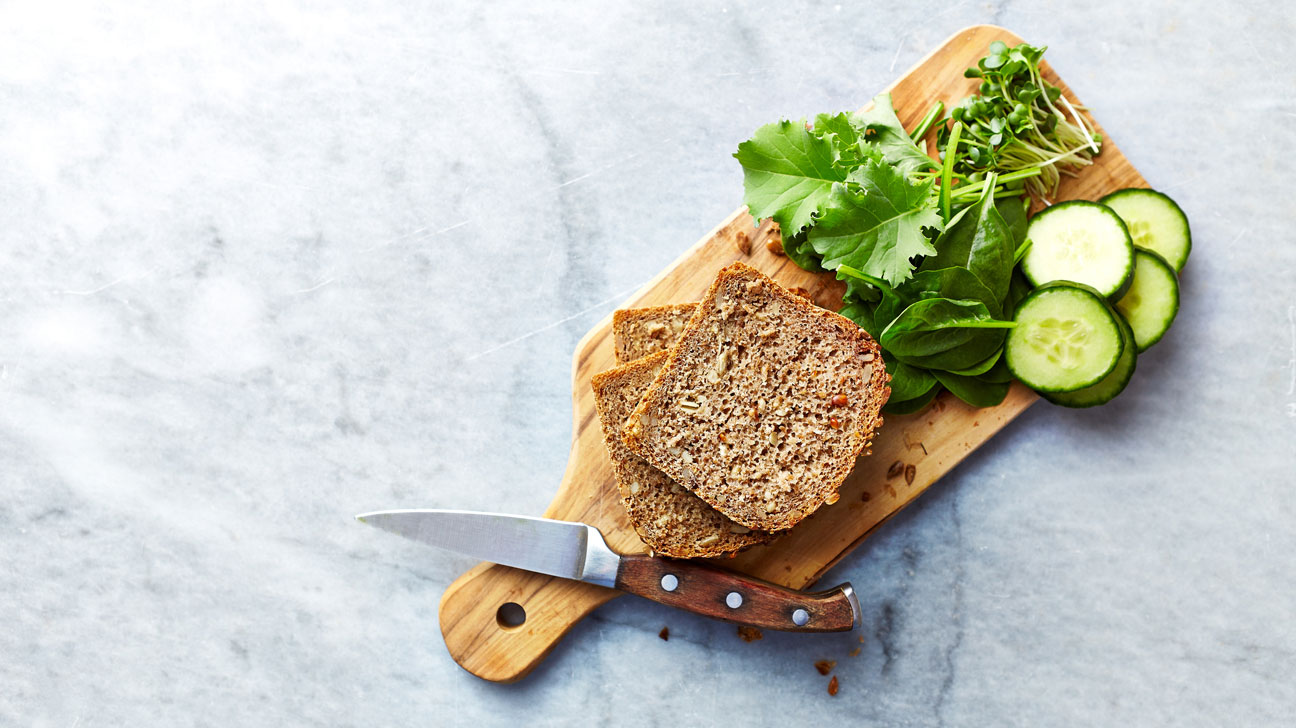What is the healthiest bread to eat is whole grain or sprouted grain bread. These options offer more nutrients and fiber.
Whole grain and sprouted grain breads are packed with essential nutrients. They contain more fiber, vitamins, and minerals than refined white bread. Choosing whole grain or sprouted grain bread can support better digestion and provide sustained energy. These breads also have a lower glycemic index, which helps in maintaining stable blood sugar levels.
They are ideal for those looking to improve their overall health and well-being. Making the switch to whole grain or sprouted grain bread can be a simple yet impactful dietary change. Enjoy these healthier bread options for their nutritional benefits and delicious taste.
Introduction To Healthy Breads
Bread is a staple food in many diets around the world. But not all bread is created equal. Some are healthier than others. Knowing what makes bread healthy can help you make better choices.
Why Bread?
Bread is more than just a food. It provides essential nutrients and energy. Here are some reasons why bread is important:
- Source of Carbohydrates: Bread provides quick energy.
- Rich in Fiber: Whole grain bread helps digestion.
- Contains Vitamins and Minerals: Bread can be fortified with nutrients.
Bread Myths Debunked
There are many myths about bread. Let’s debunk some of them:
- Myth: All bread is bad for you.
- Fact: Whole grain and multi-grain breads are healthy.
- Myth: Bread makes you gain weight.
- Fact: Eating in moderation is key.
- Myth: White bread has no nutrients.
- Fact: Some white bread is fortified with vitamins.
Understanding these myths helps you make informed choices. Choose wisely and enjoy the benefits of healthy bread.
Nutritional Components Of Bread
Bread is a staple food in many diets worldwide. Its nutritional value can vary based on ingredients. Understanding these components helps you choose healthier options. Let’s explore the key nutritional aspects.
Fiber Content
Fiber is a crucial component for a healthy diet. It aids digestion and keeps you feeling full. Different breads have varying fiber content.
- Whole grain bread: High in fiber, supports digestive health.
- White bread: Low in fiber, less beneficial for digestion.
Check the nutritional label for fiber content. Aim for at least 3 grams per serving.
Whole Grains Vs. Refined Grains
Bread is made from either whole grains or refined grains. The choice affects its nutritional value.
| Whole Grains | Refined Grains | |
|---|---|---|
| Nutritional Value | High in fiber, vitamins, and minerals | Lower in fiber, vitamins removed |
| Processing | Minimally processed, keeps all parts of the grain | Highly processed, removes bran and germ |
Whole grain bread is a healthier choice. It retains more nutrients.
Look for labels like “100% whole grain” or “whole wheat.” This ensures you get the most benefits.
Top Picks For Healthy Bread
Choosing the healthiest bread can be a challenge. This section will help you find the best options. Below, you’ll discover our top picks for healthy bread.
Sourdough
Sourdough bread is a favorite among health enthusiasts. It is made through a natural fermentation process. This makes it easier to digest. The fermentation also helps to lower the glycemic index. This means it won’t spike your blood sugar as much.
Sourdough is rich in probiotics, which are good for gut health. It also contains more nutrients than regular bread. These include iron, zinc, and magnesium.
Here are some benefits of Sourdough bread:
- Improved digestion
- Lower glycemic index
- Rich in nutrients
Whole Wheat
Whole wheat bread is made from whole grains. This means it retains more nutrients. It is a great source of fiber. Fiber helps to keep you full longer. It also aids in digestion.
Whole wheat bread is rich in vitamins and minerals. These include B vitamins, iron, and magnesium. It also has a lower glycemic index compared to white bread.
Key benefits of Whole Wheat bread:
- High in fiber
- Rich in nutrients
- Lower glycemic index
Sprouted Grain Bread
Sprouted grain bread is made from sprouted whole grains. This process makes the grains easier to digest. It also increases the bread’s nutrient content.
Sprouted grain bread is high in fiber and protein. It is also rich in vitamins and minerals. These include B vitamins, vitamin C, and folate.
Benefits of Sprouted Grain Bread:
- High in fiber and protein
- Rich in vitamins and minerals
- Easier to digest

Credit: eattolive.com.au
Gluten-free Options
Choosing the healthiest bread can be challenging, especially with dietary restrictions. For those with gluten intolerance or celiac disease, gluten-free options are essential. Let’s explore the world of gluten-free bread and identify the best choices for your health.
Understanding Gluten-free
Gluten is a protein found in wheat, barley, and rye. Some people cannot digest gluten. This can cause health issues like bloating or more severe reactions. Gluten-free bread is made without these grains. It uses alternative flours such as rice, almond, or coconut flour.
Gluten-free bread offers a solution for people with gluten intolerance. It allows them to enjoy bread without discomfort. Not all gluten-free breads are the same, though. Some are healthier than others.
Best Gluten-free Breads
Here are some of the best gluten-free bread options:
- Sourdough Gluten-Free Bread: Made with a fermentation process, aiding digestion.
- Almond Flour Bread: High in protein and low in carbs.
- Brown Rice Bread: Rich in fiber and essential nutrients.
- Coconut Flour Bread: Low in carbs and high in fiber.
- Quinoa Bread: Packed with protein and essential amino acids.
Let’s compare some of these gluten-free breads:
| Bread Type | Key Nutrients | Benefits |
|---|---|---|
| Sourdough | Probiotics, Fiber | Aids digestion, Easy to digest |
| Almond Flour | Protein, Healthy Fats | Low in carbs, High in protein |
| Brown Rice | Fiber, B Vitamins | Supports heart health, Gluten-free |
| Coconut Flour | Fiber, Low Carbs | Supports weight loss, Gluten-free |
| Quinoa | Protein, Amino Acids | Complete protein, Gluten-free |
Choosing the right gluten-free bread can improve your diet. It can also help manage gluten intolerance effectively.
Low-calorie Breads For Weight Loss
Choosing the right bread can support your weight loss journey. Low-calorie breads offer a healthier option without compromising on taste. This section explores the benefits and top choices of low-calorie breads.
Benefits Of Low-calorie Breads
Low-calorie breads help in reducing your daily calorie intake. They can keep you feeling full longer, aiding in weight loss. These breads often contain whole grains and fiber, which support digestion. Fiber-rich breads can also help in controlling blood sugar levels. These benefits make low-calorie breads a smart choice for a balanced diet.
Top Low-calorie Choices
| Bread Type | Calories Per Slice | Key Benefits |
|---|---|---|
| Whole Wheat Bread | 70-80 | High in fiber, aids digestion |
| Rye Bread | 60-70 | Improves heart health, rich in nutrients |
| Multigrain Bread | 65-75 | Contains multiple grains, offers varied nutrients |
| Sourdough Bread | 60-70 | Easy to digest, contains probiotics |
| Ezekiel Bread | 70-80 | Made from sprouted grains, high in protein |
- Whole Wheat Bread: Made from whole grains, high in fiber.
- Rye Bread: Lower in calories, rich in nutrients, heart-healthy.
- Multigrain Bread: Contains various grains, balanced nutrients.
- Sourdough Bread: Contains probiotics, easy to digest.
- Ezekiel Bread: Made from sprouted grains, high in protein.
Choosing low-calorie breads can support your weight loss goals. They offer essential nutrients and help you feel full longer. Make smarter choices with these top low-calorie breads.

Credit: www.eatthis.com
Reading Bread Labels
Finding the healthiest bread involves reading labels carefully. Labels tell you what’s inside. This helps you make better choices. Let’s dive into what to look for.
Spotting Whole Grains
Whole grains are good for your health. Look for the word “whole” in the ingredient list. It should be the first word listed. This means the bread is made from whole grains.
- Whole wheat
- Whole oats
- Whole barley
These grains keep all parts of the grain. They have more nutrients and fiber. This makes them healthier for you.
Deciphering Nutritional Information
Next, check the nutritional label. This label gives you important details. Here are key things to look at:
| Nutrient | Ideal Amount |
|---|---|
| Fiber | 3 grams or more per slice |
| Sugar | Less than 2 grams per slice |
| Sodium | Less than 150 mg per slice |
High fiber keeps you full longer. Low sugar and sodium are better for your heart. Always compare different brands. Choose the one with the best numbers.
The Role Of Organic Ingredients
What is the Healthiest Bread to Eat. Choosing bread with organic ingredients can improve your health. Organic bread is made with ingredients free from synthetic pesticides and chemicals. This makes it a safer and healthier option for you and your family.
Benefits Of Organic
Organic ingredients offer numerous health benefits. Here are some key advantages:
- No harmful chemicals: Organic bread does not contain synthetic pesticides or fertilizers.
- Rich in nutrients: Organic grains often have higher levels of essential nutrients.
- Better taste: Many people find organic bread tastes fresher and more natural.
- Supports sustainable farming: Organic farming practices are better for the environment.
Organic Vs. Non-organic Breads
What is the Healthiest Bread to Eat? Let’s compare organic and non-organic breads:
| Factor | Organic Bread | Non-Organic Bread |
|---|---|---|
| Ingredients | Natural, no synthetic chemicals | May contain synthetic additives |
| Nutrient Content | Higher in essential nutrients | Varies, often less nutrient-dense |
| Taste | Fresher, more natural | Varies, often less flavorful |
| Environmental Impact | Supports sustainable practices | May harm the environment |
Choosing organic bread can lead to a healthier lifestyle. It is a simple switch with many benefits.
Incorporating Healthy Breads Into Your Diet
What is the Healthiest Bread to Eat? Eating healthy bread can improve your overall health. These breads are full of nutrients. They help you stay full longer. Let’s look at some ways to add them to your meals.
Recipe Ideas
- Avocado Toast: Spread avocado on whole grain toast. Add a pinch of salt.
- Hummus Sandwich: Use whole wheat bread. Fill with hummus, cucumber, and tomatoes.
- Breakfast Smoothie: Pair a slice of rye bread with your favorite smoothie.
- Nut Butter & Banana: Spread almond butter on oat bread. Top with banana slices.
Balancing Your Diet With Healthy Breads
Healthy breads should be part of a balanced diet. Combine them with fruits, vegetables, and proteins. This helps you get all the nutrients you need.
Here is a simple guide to balance your meals:
| Meal | Healthy Bread | Accompaniments |
|---|---|---|
| Breakfast | Sourdough | Eggs, spinach, and tomatoes |
| Lunch | Whole Grain | Chicken, lettuce, and avocado |
| Dinner | Rye Bread | Grilled fish and steamed vegetables |
Remember to choose breads with less sugar. Whole grains and seeds are the best options.

Credit: www.healthline.com
Frequently Asked Questions
What Type Of Bread Is The Healthiest?
Whole grain bread is the healthiest option. It is rich in fiber, vitamins, and minerals, supporting overall health.
What Is The Best Bread To Eat For Weight Loss?
Whole grain bread is the best for weight loss. It is rich in fiber, keeps you full longer, and aids digestion.
What Is The Most Unhealthy Bread?
White bread is often considered the most unhealthy. It lacks fiber, vitamins, and minerals. Choose whole grain options for better health.
Is Sourdough The Healthiest Bread?
Sourdough is often considered healthier due to its natural fermentation process. It can aid digestion and improve nutrient absorption.
Conclusion
Choosing the healthiest bread involves considering ingredients, nutritional content, and dietary needs. Opt for whole grain, sprouted, or sourdough options. These choices offer more nutrients and better digestibility. Always check labels for hidden sugars and additives. Making informed decisions ensures you enjoy nutritious, delicious bread that benefits your health.




Leave a Reply